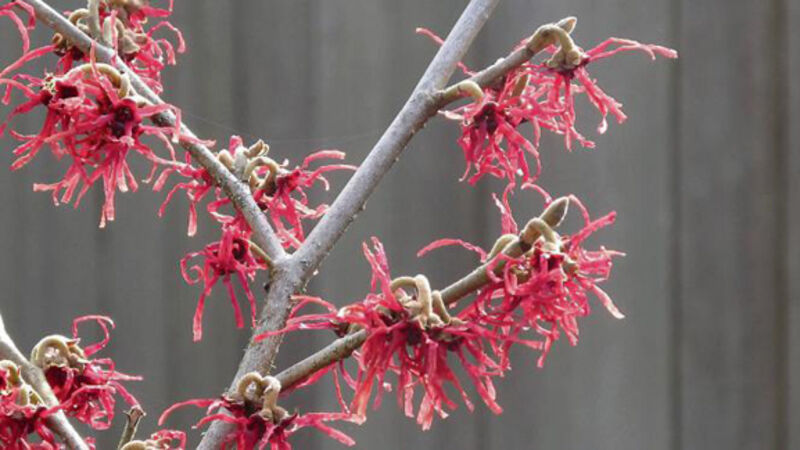Beauty of the witch hazel

I READ that we should all embrace old age, as it is a privilege denied to many.
We live in a world obsessed with youth and with looking young and because of this quest we have forgotten the essence of old age.
It’s strange how we look at life as we go through it, isn’t it? My three-year-old daughter can’t wait to be older, to be a ‘big girl’, because of the opportunities that would open up to her. I, on the other hand, would love to have some of the opportunities of youth again.
Huge sums of money are spent each year on skincare products for cleansing and blackhead removal; on after-sun and after-shave moisturisers — but did you know that there is a plant whose leaves and bark are perfect for that purpose?
Native Americans have used this plant tocreate an oil that’s multifunctional — its used as a skin tonic, cleanser and is also used medicinally to treat tumors. It has other commercial skincare uses too.
Hamamelis Virginiana is, for its aesthetic qualities alone, an aristocrat in the winter garden. More commonly known as Virginian witch hazel, it will grow to three metres in height and spread to the same width, so it makes quite a presence in the garden.
During the spring and summer, it’s a shrub that can oft go unnoticed, as it’s mid-green leaves are nothing dramatic when there is so much else to distract the attention.
However, come early autumn, as those leaves begin to change colour, it starts to attract one’s gaze. Then, later on as autumn gets cooler and the days get shorter, the colour becomes more and more dramatic as it prepares for leaf drop.
It’s worth its place in the garden for this stunning autumn display alone, but just when you think that the witch hazel’s work is all over and there are bare twigs on show, the real magic begins to happen.
And what magic — the wispy, narrow petals unfurl from little, swollen buds along the stem, opening up into the most unusual-looking flowers — golden yellow in colour. There are several other species that are commonly grown in Irish gardens.
Hamamelis is one of those plants that, while the flowers are dramatic, and unusual in shape and form, they aren’t that showy.
In other words, you may not see them from a distance unless you are looking — but you will notice them by their scent. The sweet, heady aroma fills the air around the garden on still days in Janauary and February.
Inhale lungfuls and it sends the memory darting back to childhood. It’s one of those beautiful scents that leaves you feeling elated and even, healed, for having absorbed it.
Hamammelis x intermedia ‘Arnold Promise’ is a more vibrant yellow colour, and one of my favourites of all is H. x intermedia ‘Diane’, with its burnt, coppery red-coloured flowers. If good summers come in threes, then this year you will have to keep an eye on your witch hazel.
At any sign of drought damage or stress, water will be needed and it will benefit from being grown in a fertile, loamy soil and mulched heavily with leaf mould or bark to retain moisture during the summer. Ideally, ths soil should be slightly acidic, but the tree will still grow in neutral soils.
I can understand how Chris Lane, in Kent, in the UK, has become obsessed with Hamamelis. He has a national collection growing at his garden and nursery. Some plants just grab a hold of you; they get under your skin and you can become obsessed.
He has been collecting witch hazels since the 1980s and now has 120 varieties. His nursery and collection are open for guided tours, by appointment only, and it mightbe a good excursion for a club or society. For more information, go to www.witchhazelnursery.com
Or, you could visit the Sir Harold Hillier Gardens, where you will also find a national collection of Hamamelis, among the largest collection of trees and shrubs in the world, in a 180-acre garden in Hampshire.
So, while we may have progressed from the ways of the American Indians and we now buy our skincare products in plastic containers, the witch hazel remains the same as it was then.
We change, the plants don’t; so, bring life to your garden this winter and for many winters to come, with one of the finest small trees of all.













